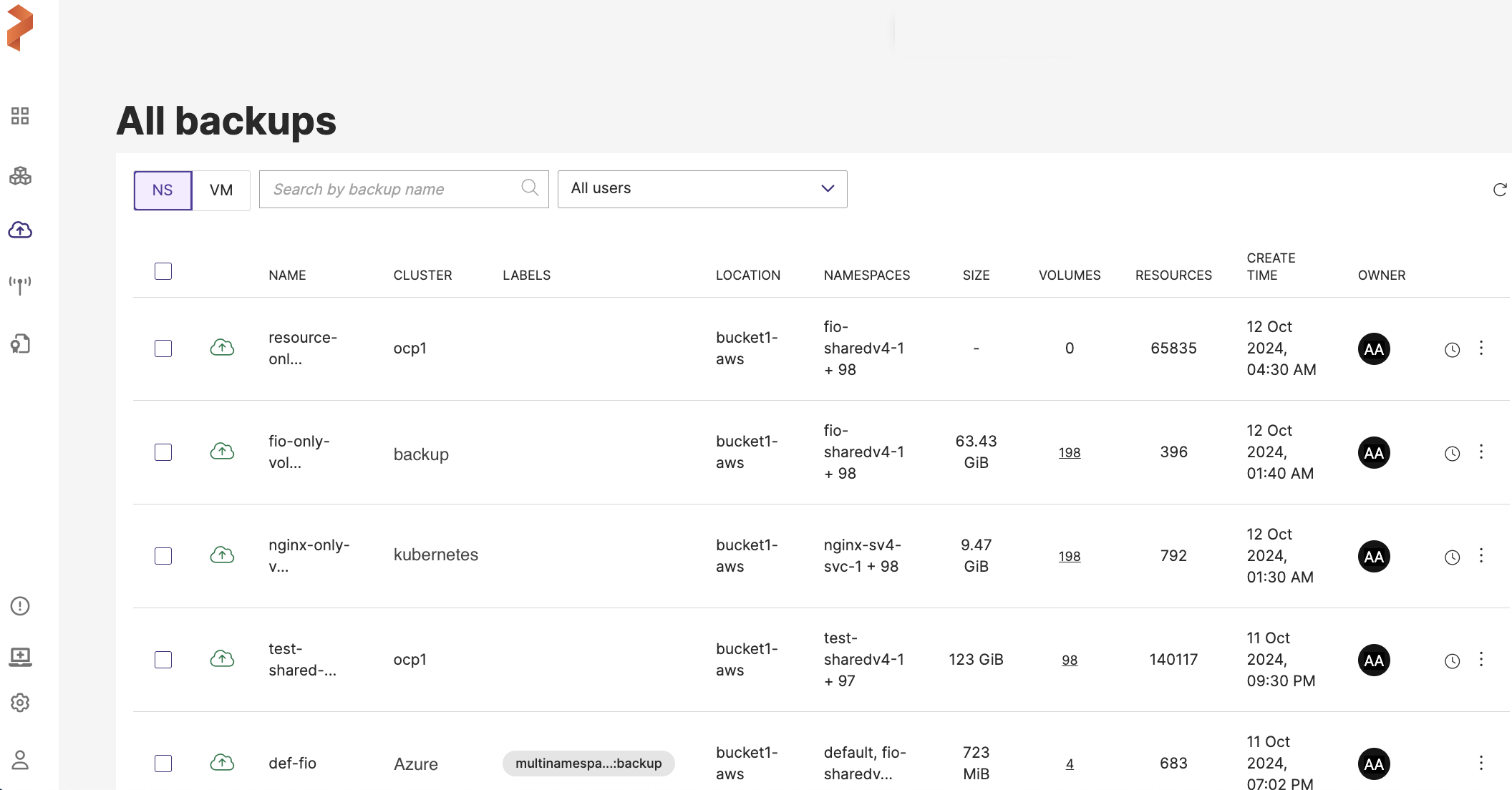All backups page
All Backups page in Portworx Backup web console provides a detailed view of all the backups created by various users on different clusters displayed in the web console. This page lists all the backups across different clusters, providing a comprehensive view of backup status, storage usage, and other critical metrics.
This page offers a detailed, at-a-glance view of all the backups across namespaces and clusters in Portworx Backup. It allows users to monitor backup status, view storage consumption, and manage backups efficiently. Understanding each component of this page ensures proper backup management in Kubernetes environments.
How to access All Backups page
-
From the home page, go to the left navigation pane.
-
Click on Clusters icon.
-
In the Clusters page, click on All Backups towards the right.

Components
-
NS/VM Toggle:
- NS (Namespace): displays namespace-based backups. Namespaces in Kubernetes are logical separations within the cluster, and this view allows users to manage backups of entire namespaces.
- VM (Virtual Machine): if you have backed up VMs using Portworx Backup, this tab provides a view of VM backups.
-
Backup Search
- Search bar: users can search for specific backups by name, which makes finding a particular backup easier, especially in environments with many backups.
-
User Filter
- User filter: allows filtering the backups based on the backup owner or user ID. You can select the required user from the drop-down and view the backup(s) associated with that specific user.
-
Backup List Components:
- Checkbox: allows you to select one or few or all of the backups of the page for bulk deletion.
- Name: the name of each backup, helping users to identify their backups easily. In this case, you view the backups with user-defined or auto-generated names.
- Cluster: indicates the Kubernetes cluster associated with the backup. This is crucial for identifying the cluster or the environment the backup belongs to, especially in multi-cluster setups.
- Labels: allows categorization and filtering of backups based on labels (key-value pairs) applied to them.
- Location: this shows the storage location where the backup is saved. Storage location can be an AWS S3 bucket or an Azure immutable container, a bucket from another cloud provider or on-premises storage location.
- Namespaces: shows the namespace(s) included in the backup. Either a single namespace or multiple namespaces multiple namespaces can be included in a single backup based on user preferences.
- Size: the size of the backup, ranging from KBs to GBs, provides an overview of how much data is stored in each backup.
- Volumes: the number of persistent volumes included in the backup, which is critical for understanding the storage footprint of the backup.
- Resources: number of resources (such as pods, services, ConfigMaps and so on) included in the backup. Higher the number of resources is an indicator that the backup captures a significant portion of the namespace or cluster.
- Create Time: this column shows the time stamp when the backup was created, enabling users to track and verify when backups were taken.
- Owner: indicates the user who created the backup. The owner's initials are shown, which is essential for auditing and accountability.
- Lock icon: conveys that the backup data resides on a locked backup location.
- Clock icon: this icon tells that the backup has schedules associated with it to be run at stipulated times with the specified incremental count and retention period.
-
Backup Actions (Vertical Ellipsis):
- Users can take further actions on each backup using the vertical ellipsis menu, such as restore, delete, or view detailed backup logs. This option provides flexibility for managing individual backups.